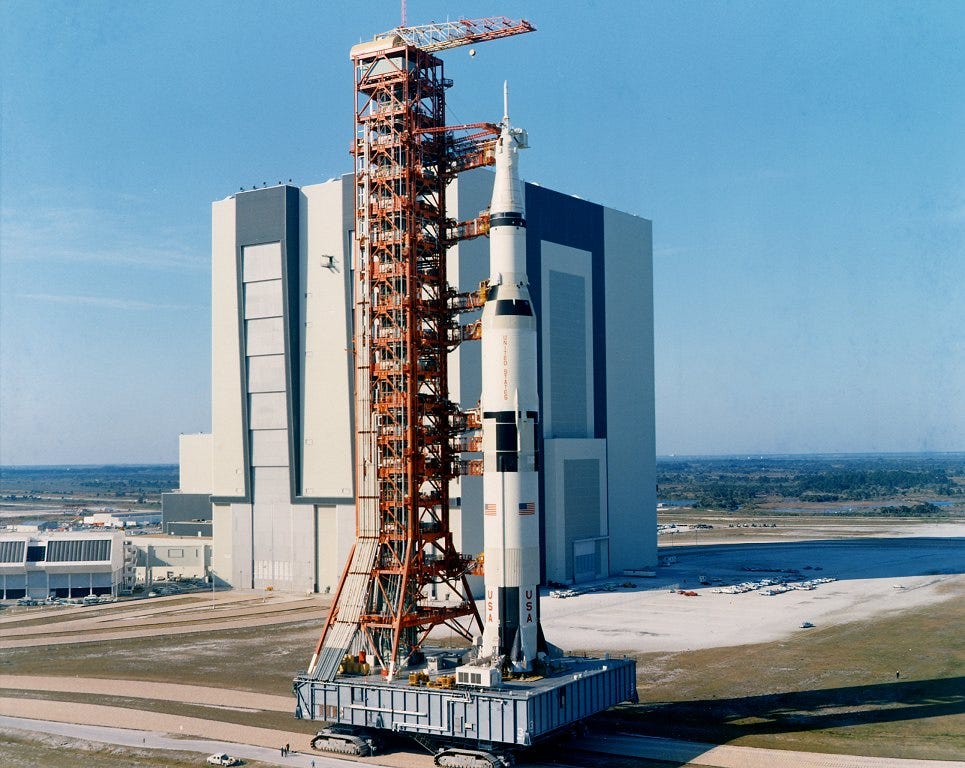TDIH: Apollo 10's near disaster
A lunar module carrying two astronauts spun out of control and was barely recovered.
On this day in 1969, Apollo 10 is launched. It was the last mission before Apollo 11 famously landed on the moon, but did you know that the mission nearly ended in tragedy? A lunar module carrying two astronauts spun out of control and was barely recovered.
Astronauts Gene Cernan and Tom Stafford were aboard the lunar module (LM) that day. They were supposed to take the LM on a trial run, testing both its ability to descend towards the moon and its ability to ascend back towards the Command Module.
No landing was scheduled in-between.
Unfortunately, just as they were attempting to leave the moon, the LM went into a wild spin. “I saw the lunar horizon go by about seven or eight times in ten seconds,” Cernan later said. “That’s a hair raising experience.”
The astronauts fortunately managed to regain control of the spinning spaceship, but what if they hadn’t? Apollo 10 was basically a dress rehearsal for Apollo 11 and its famous moon landing. How would such a tragedy have affected that sequence? Would we still remember Neil Armstrong as the first man to step onto the moon?
Fortunately, none of those questions ever had to be answered.
Apollo 10 launched from Cape Kennedy on May 18, with three astronauts aboard. It came on the heels of Apollo 8 (first trip to the moon) and Apollo 9 (test the LM in outer space, but close to Earth). Apollo 10 would combine these tasks by carrying the LM to the moon and testing it there. The astronauts would come within miles of the moon’s surface, but never actually land.
In fact, they weren’t even given enough fuel to make such an attempt. Some people claim that NASA shortchanged the fuel on purpose, fearing that Apollo 10’s crew would be too tempted to land. The more likely explanation is that NASA couldn’t accurately test the LM’s ascent from the moon if it was weighed down with too much fuel.
Perhaps that worked out well? The ascent phase turned out to be the precise point at which the astronauts ran into trouble. At that juncture, they were supposed to separate the descent stage from the spacecraft and ignite the ascent stage. The descent portion should have fallen harmlessly to the moon’s surface while the ascent stage propelled the LM back to the Command Module. But something went wrong, and the LM began spinning out of control.
“[There was some switch] that had to be changed, and I changed it,” Cernan later described. “And I’d be willing to bet that . . . I put the switch in the new position and Tom [Stafford] went ahead and moved it back to the old one. His action was to move the switch. I had already done it for him. But he didn’t know that and, when he moved the switch, he just moved it back where it was. And, in effect, we created the problem.”
The roll was nearly unrecoverable, but Stafford miraculously got the ship back under control. It was later estimated that the LM was just two seconds away from disaster, but Stafford’s quick thinking had kept the LM from crashing onto the lunar surface. The two men made it safely back to the Command Module, and the Apollo 10 crew splashed down in the Pacific on May 26.
It would be left to Apollo 11 to make the first landing on the moon just two short months later.
Naturally, that is a story for another day.
Sources can always be found on my website, here.





Human error? You would think that changing the position of that switch would have been one person's responsibility and that one person only. probably rehersed a jillion times.
I recall the incident and it must have been a Human caused error or Appolo 11 wouldn't have happened when it did.
Thank you Tara.
Those moon shots were so exciting as a youth. They were heavily covered by the media and we were on the edge of our seats! I love these recaps! Thanks Tara!